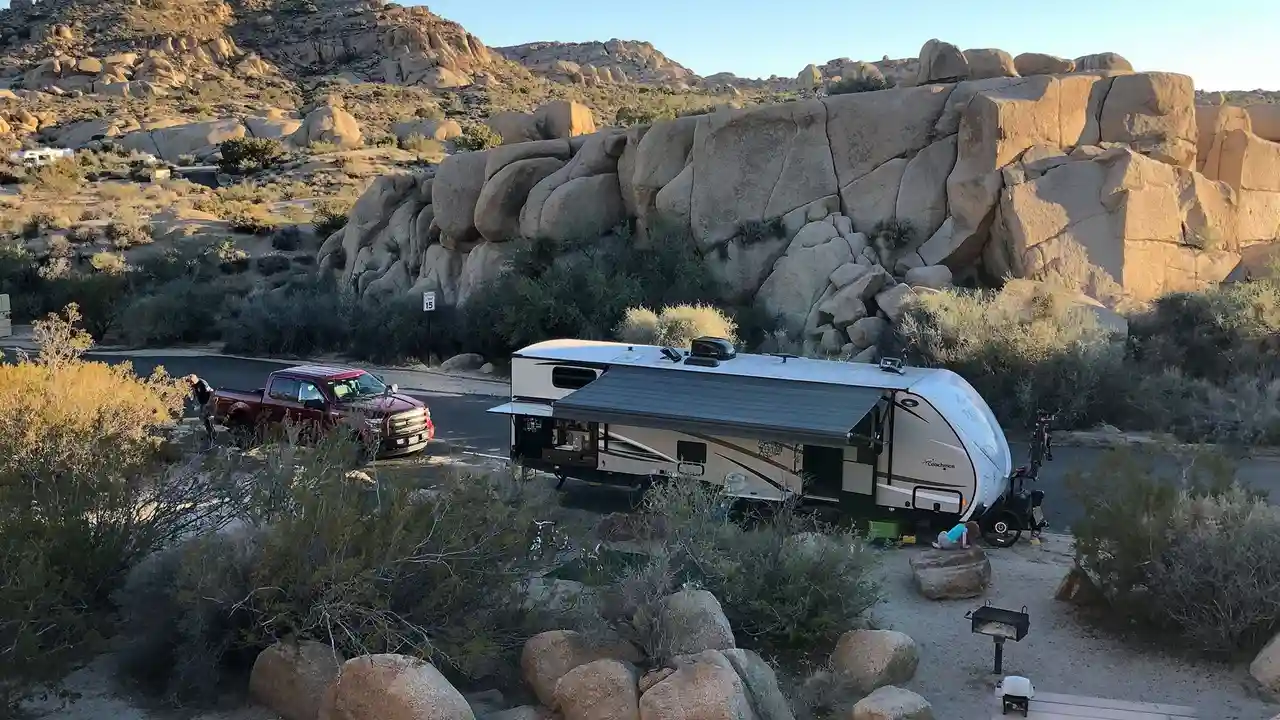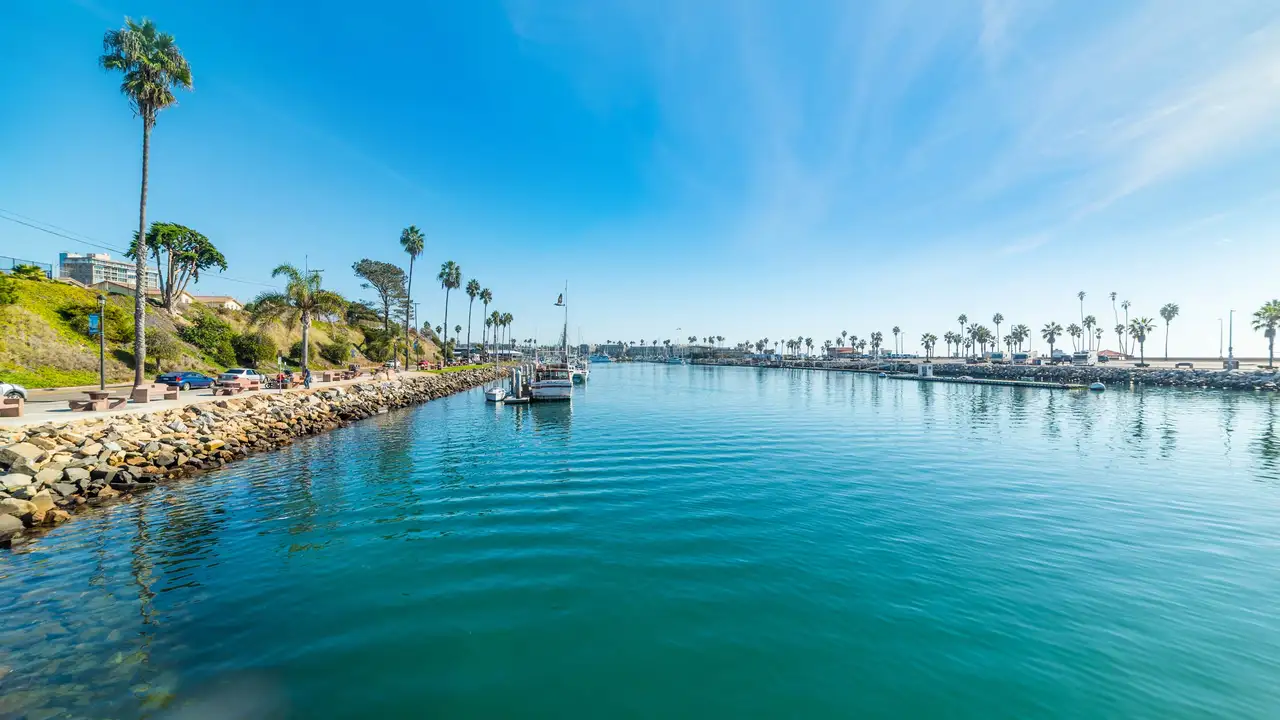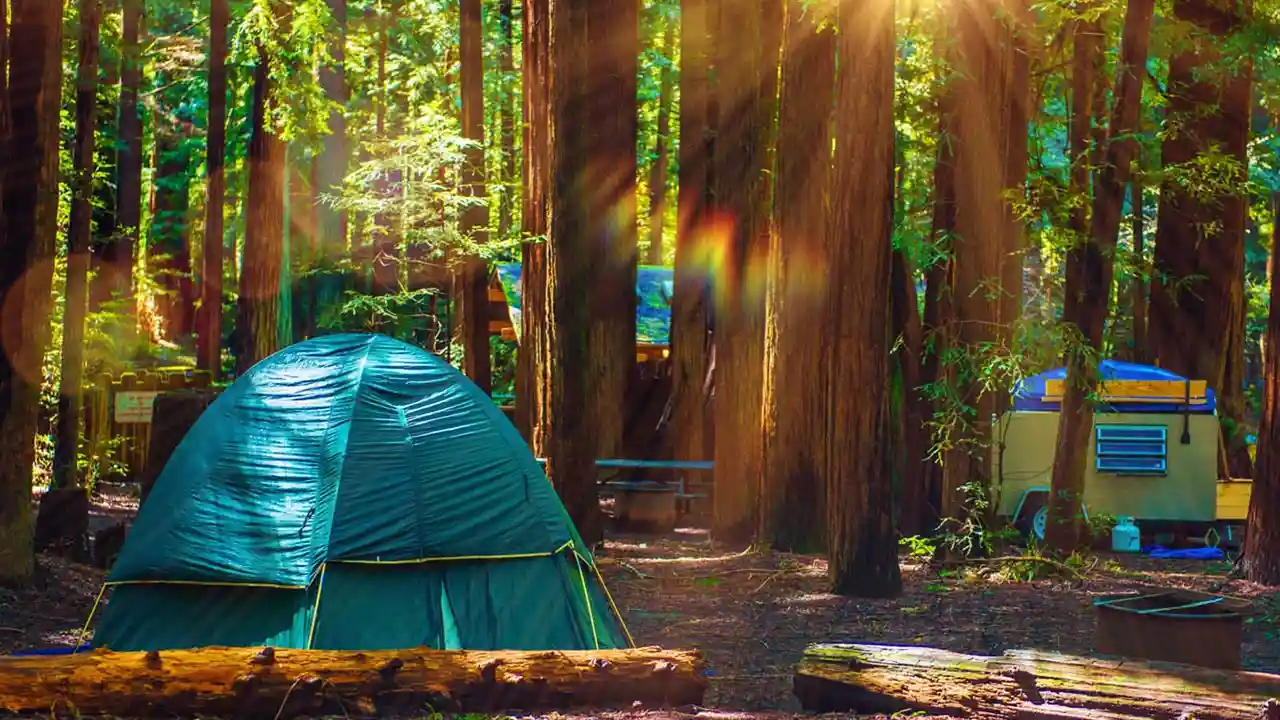Desert Camping_ Setting Up Camp in California

This article delves into essential desert survival skills needed to thrive in California's harsh desert environments, covering everything from water procurement and shelter building to navigation and wildlife awareness. We'll also explore recommended gear, comparing different products to help you make informed choices for your desert adventures.
Understanding California Desert Environments
California's deserts are diverse, ranging from the scorching Mojave to the arid Colorado Desert. Each presents unique challenges and requires specific knowledge for survival. Understanding the local climate, terrain, and potential hazards is the first step towards a safe and enjoyable desert experience.
The Mojave Desert, characterized by its Joshua Trees and extreme temperatures, demands careful planning and preparation. The Colorado Desert, known for its sandy landscapes and flash flood risks, requires a different set of skills.
Essential Desert Survival Gear Recommendations
Having the right gear can be the difference between a successful trip and a dangerous situation. Here are some essential items to consider:
Water Filtration Systems and Hydration Packs
Water is paramount in the desert. A reliable water filtration system is crucial for purifying found water sources. Hydration packs allow you to carry ample water hands-free.
Product Recommendation: Sawyer Squeeze Water Filter. This lightweight and durable filter removes bacteria, protozoa, and microplastics, making it safe to drink from streams, lakes, and even puddles. Use Case: Backpacking, hiking, camping. Price: Approximately $30.
Product Recommendation: CamelBak M.U.L.E. Hydration Pack. This pack offers 3 liters of water capacity and ample storage for other essentials. Use Case: Hiking, mountain biking, day trips. Price: Approximately $120.
Product Comparison: While the Sawyer Squeeze excels in filtration, the CamelBak M.U.L.E. focuses on convenient water carrying and storage. For longer trips, consider both a filtration system and a hydration pack.
Sun Protection Gear for Desert Adventures
The sun in the desert is relentless. Protecting yourself from the sun's harmful rays is essential. This includes sunscreen, hats, and sunglasses.
Product Recommendation: Sun Bum SPF 50 Sunscreen. This broad-spectrum sunscreen is water-resistant and protects against UVA and UVB rays. Use Case: All outdoor activities. Price: Approximately $15.
Product Recommendation: Outdoor Research Sun Runner Cap. This hat provides excellent sun protection for your face and neck. Use Case: Hiking, fishing, gardening. Price: Approximately $30.
Product Recommendation: Oakley Sunglasses. High-quality sunglasses protect your eyes from glare and harmful UV rays. Use Case: Driving, hiking, everyday wear. Price: Approximately $150.
Product Comparison: Look for sunscreens with a high SPF rating and broad-spectrum protection. Hats with wide brims offer the best sun protection. Invest in polarized sunglasses to reduce glare.
Navigation Tools and Desert Wayfinding
Getting lost in the desert can be deadly. A map, compass, and GPS device are essential for navigation.
Product Recommendation: Garmin GPSMAP 64sx. This handheld GPS device offers accurate location tracking and preloaded maps. Use Case: Hiking, backpacking, geocaching. Price: Approximately $300.
Product Recommendation: Suunto MC-2 Compass. This reliable compass is essential for navigating without electronics. Use Case: Hiking, backpacking, orienteering. Price: Approximately $80.
Product Comparison: While GPS devices offer convenience, compasses are essential backups. Learn how to use both effectively.
First Aid Kits for Desert Emergencies
A well-stocked first aid kit is crucial for treating minor injuries and addressing medical emergencies. Include items for treating cuts, burns, dehydration, and snake bites.
Product Recommendation: Adventure Medical Kits Ultralight/Watertight Medical Kit. This compact kit contains essential supplies for treating common injuries. Use Case: Hiking, camping, backpacking. Price: Approximately $30.
Product Recommendation: Snake Bite Kit. While prevention is key, knowing how to treat a snake bite is critical. Use Case: Any desert travel. Price: Approximately $20.
Product Comparison: Customize your first aid kit to meet your specific needs and skill level. Consider adding items for treating allergies, blisters, and sunburn.
Shelter and Protection from the Elements
The desert can be extremely hot during the day and cold at night. Having a shelter can protect you from the elements.
Product Recommendation: Emergency Bivy Sack. This lightweight sack provides protection from wind and rain. Use Case: Emergency shelter, backpacking. Price: Approximately $20.
Product Recommendation: Lightweight Tent. For longer trips, a tent provides more substantial protection. Use Case: Camping, backpacking. Price: Varies greatly depending on size and features.
Product Comparison: Bivy sacks are lightweight and packable, but tents offer more space and comfort.
Water Procurement Techniques in the California Deserts
Finding water is a top priority in the desert. Learn how to identify potential water sources and purify them for drinking.
Identifying Potential Water Sources
Look for signs of vegetation, animal tracks, or dry washes. These areas may indicate the presence of underground water.
Building a Solar Still for Water Collection
A solar still can extract moisture from the ground. Dig a pit, place a container in the center, cover the pit with plastic, and weigh down the center of the plastic with a small rock. The moisture will condense on the plastic and drip into the container.
Collecting Dew and Rainwater
Collect dew from plants in the early morning using a cloth. Collect rainwater in containers or tarps.
Building Desert Shelters for Survival
Shelter can protect you from the sun, wind, and cold. Learn how to build simple shelters using natural materials.
Constructing a Lean-To Shelter
Lean branches against a sturdy tree or rock, then cover them with leaves, branches, and other debris.
Building a Debris Hut for Insulation
Pile up debris around a frame of branches to create an insulated shelter.
Utilizing Natural Rock Overhangs
Seek shelter under rock overhangs or in caves.
Desert Fire Starting Techniques and Safety
Fire can provide warmth, light, and a way to cook food. Learn how to start a fire safely in the desert.
Gathering Tinder, Kindling, and Fuel
Collect dry leaves, twigs, and branches. Look for resinous wood for a longer-lasting fire.
Using a Fire Starter or Matches
Carry a fire starter or waterproof matches. Use a fire starter to ignite tinder, then add kindling and fuel.
Fire Safety Precautions
Clear a wide area around your fire. Keep water nearby. Never leave a fire unattended. Ensure the fire is completely extinguished before leaving.
Navigating the California Desert Landscape
Navigation skills are essential for avoiding getting lost in the desert.
Using a Map and Compass Effectively
Learn how to read a map and use a compass to determine your location and direction.
Reading Topographical Maps for Terrain Awareness
Topographical maps show elevation changes and terrain features. Use them to plan your route and avoid difficult terrain.
Understanding Desert Terrain and Landmarks
Familiarize yourself with common desert landmarks, such as mountains, canyons, and washes. Use these landmarks to orient yourself.
Using the Stars for Nighttime Navigation
Learn how to identify constellations and use them to determine direction at night.
Wildlife Awareness and Safety in the Desert
The desert is home to a variety of wildlife, some of which can be dangerous. Learn how to avoid encounters and what to do if you encounter a dangerous animal.
Identifying Common Desert Animals
Learn to identify common desert animals, such as snakes, scorpions, spiders, and coyotes.
Avoiding Encounters with Snakes and Scorpions
Wear closed-toe shoes and long pants. Be careful where you step and reach. Shake out your boots and clothing before putting them on.
What to Do in Case of a Snake Bite
Stay calm. Immobilize the affected limb. Seek medical attention immediately.
Protecting Food and Water from Animals
Store food and water in airtight containers. Hang food from a tree to keep it away from rodents and other animals.
Desert First Aid and Medical Emergencies
Be prepared to handle medical emergencies in the desert.
Treating Dehydration and Heatstroke
Drink plenty of water. Seek shade. Cool your body with water or wet cloths. Seek medical attention if symptoms worsen.
Treating Sunburn and Sun Poisoning
Apply sunscreen. Wear protective clothing. Stay out of the sun during peak hours. Apply aloe vera to soothe sunburned skin.
Treating Cuts, Scrapes, and Blisters
Clean wounds with soap and water. Apply antiseptic ointment. Cover wounds with bandages. Treat blisters with blister pads.
Dealing with Allergic Reactions
Carry an epinephrine auto-injector if you are allergic to insect stings or other allergens. Seek medical attention immediately if you experience a severe allergic reaction.
Mental Resilience and Staying Positive in a Desert Survival Situation
Maintaining a positive attitude and staying mentally resilient is crucial for survival.
Managing Fear and Anxiety
Acknowledge your fear and anxiety. Focus on the present moment. Take deep breaths. Remind yourself that you are capable of surviving.
Setting Realistic Goals and Staying Focused
Set small, achievable goals. Focus on one task at a time. Avoid getting overwhelmed.
Communicating with Others if Possible
If you are with a group, communicate with each other. Share your fears and concerns. Work together to solve problems.
Maintaining Hope and a Positive Attitude
Believe that you will survive. Visualize yourself being rescued. Remember your loved ones and the reasons why you want to survive.
Desert Survival Kit Essentials Checklist
Here's a checklist of essential items to include in your desert survival kit:
- Water filtration system
- Hydration pack
- Sunscreen
- Hat
- Sunglasses
- Map
- Compass
- GPS device
- First aid kit
- Emergency bivy sack
- Fire starter
- Knife
- Rope
- Food
- Water
Practicing Desert Survival Skills Before You Need Them
The best way to prepare for a desert survival situation is to practice your skills before you need them. Take a desert survival course. Practice building shelters, starting fires, and navigating with a map and compass. Familiarize yourself with the local flora and fauna. The more you practice, the more confident you will be in your ability to survive.
Legal Considerations and Permits for Desert Camping in California
Before embarking on a desert camping trip, research the legal requirements and obtain any necessary permits. Some areas require permits for camping, campfires, or off-road vehicle use. Be aware of private property boundaries and respect the environment.
Contact the Bureau of Land Management (BLM) or the National Park Service (NPS) for information on permits and regulations in specific areas.
Leave No Trace Principles in the California Deserts
Protecting the fragile desert environment is essential. Follow Leave No Trace principles to minimize your impact:
- Plan ahead and prepare
- Travel and camp on durable surfaces
- Dispose of waste properly
- Leave what you find
- Minimize campfire impacts
- Respect wildlife
- Be considerate of other visitors
Advanced Desert Survival Techniques for Experienced Adventurers
For experienced adventurers, consider learning advanced survival techniques, such as:
- Trapping small animals for food
- Identifying edible plants
- Building more sophisticated shelters
- Creating fire using friction methods
These skills require extensive training and practice. Consult with experienced survival instructors before attempting them.
The Importance of Physical Fitness for Desert Survival
Desert survival requires physical endurance and strength. Be in good physical condition before embarking on a desert adventure. Train by hiking, running, and lifting weights. Practice carrying a heavy pack. The fitter you are, the better your chances of survival.
Understanding Desert Weather Patterns and Forecasting
Desert weather can change rapidly. Learn to recognize signs of approaching storms and be prepared to take shelter. Monitor weather forecasts before and during your trip.
Be aware of the risks of flash floods, dust storms, and extreme temperatures.
Desert Search and Rescue Procedures and Signaling
If you become lost or injured, knowing how to signal for help can be crucial. Carry a whistle, signal mirror, and brightly colored clothing. Build a signal fire. Create large ground signals using rocks or branches.
Understand the basics of search and rescue procedures. Stay in one place. Make yourself visible. Cooperate with rescue personnel.
The Ethical Considerations of Desert Survival
Desert survival is not just about surviving; it's also about respecting the environment and other people. Avoid damaging or destroying natural resources. Be considerate of other visitors. Leave the desert as you found it.
Consider the ethical implications of your actions and make responsible choices.
Desert Photography Tips and Techniques
The desert offers stunning photographic opportunities. Capture the beauty of the landscape by following these tips:
- Shoot during the golden hours (sunrise and sunset) for the best light.
- Use a wide-angle lens to capture the vastness of the desert.
- Look for interesting textures and patterns in the sand, rocks, and plants.
- Photograph wildlife from a safe distance.
- Protect your camera from dust and sand.
Desert Stargazing and Astronomy
The desert's dark skies offer incredible stargazing opportunities. Bring a telescope or binoculars and explore the wonders of the universe. Learn to identify constellations and planets. Enjoy the peace and tranquility of the desert night.
Desert Geology and Rockhounding
The desert is a treasure trove of geological wonders. Learn about the different types of rocks and minerals found in the desert. Go rockhounding and collect interesting specimens. Be aware of any restrictions on collecting rocks and minerals in specific areas.
Desert Plant Identification and Uses
Many desert plants have medicinal or edible properties. Learn to identify common desert plants and their uses. However, be extremely cautious before consuming any wild plants. Some plants are poisonous and can be harmful.
Desert Stories and Folklore
The desert is rich in stories and folklore. Learn about the history and culture of the desert people. Read books and listen to stories about the desert. Connect with the spirit of the desert.
The Future of Desert Conservation and Preservation
The desert is a fragile ecosystem that is threatened by human activities. Support organizations that are working to protect and preserve the desert. Advocate for responsible land management policies. Educate others about the importance of desert conservation.
By working together, we can ensure that future generations will be able to enjoy the beauty and wonder of the California deserts.
Desert Camping Checklist Revisited A Final Review
Before you head out, let’s double-check that desert camping checklist. Did you pack extra water? Is your first-aid kit complete with snake bite treatment? Do you have multiple ways to navigate? Preparation is key to a safe and enjoyable desert experience.
Remember, the desert demands respect. It's a place of extreme beauty and extreme danger. By understanding the risks, learning the essential survival skills, and packing the right gear, you can have an unforgettable adventure in the California deserts.
:max_bytes(150000):strip_icc()/277019-baked-pork-chops-with-cream-of-mushroom-soup-DDMFS-beauty-4x3-BG-7505-5762b731cf30447d9cbbbbbf387beafa.jpg)






